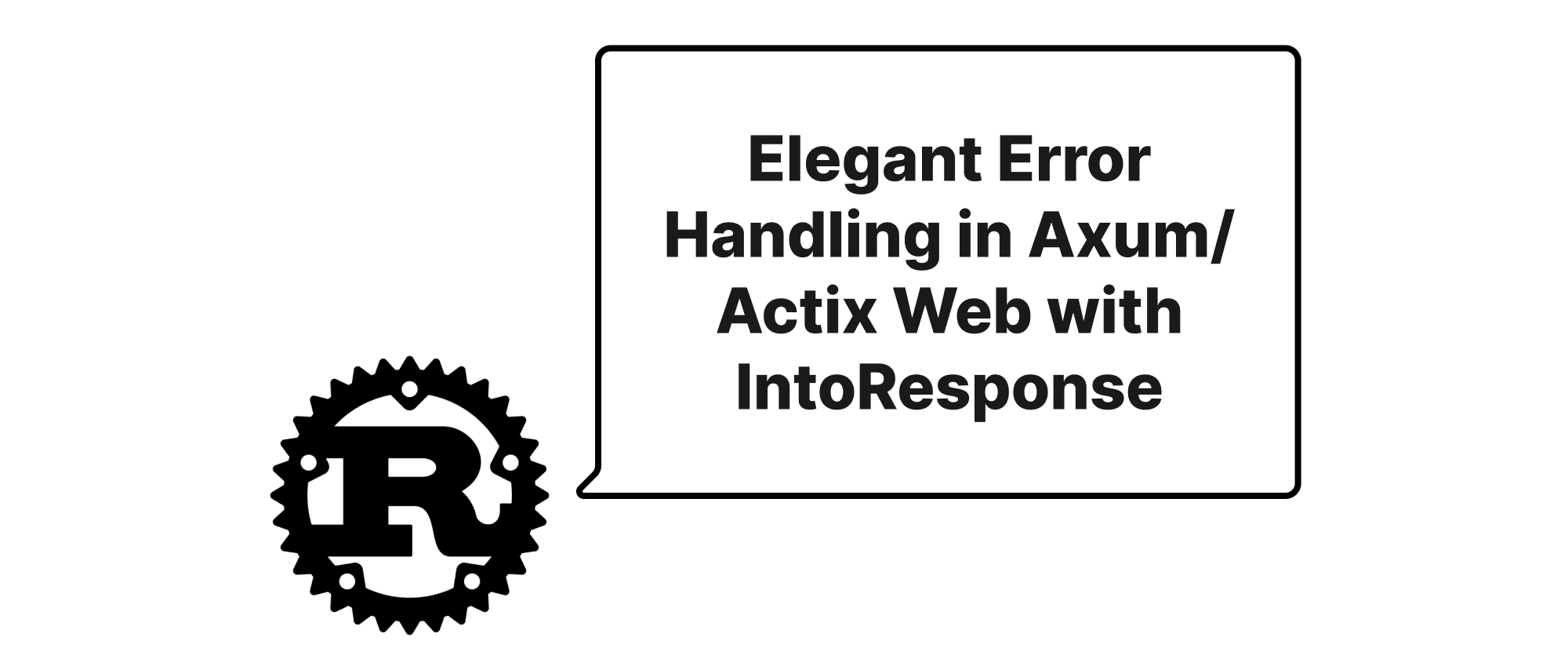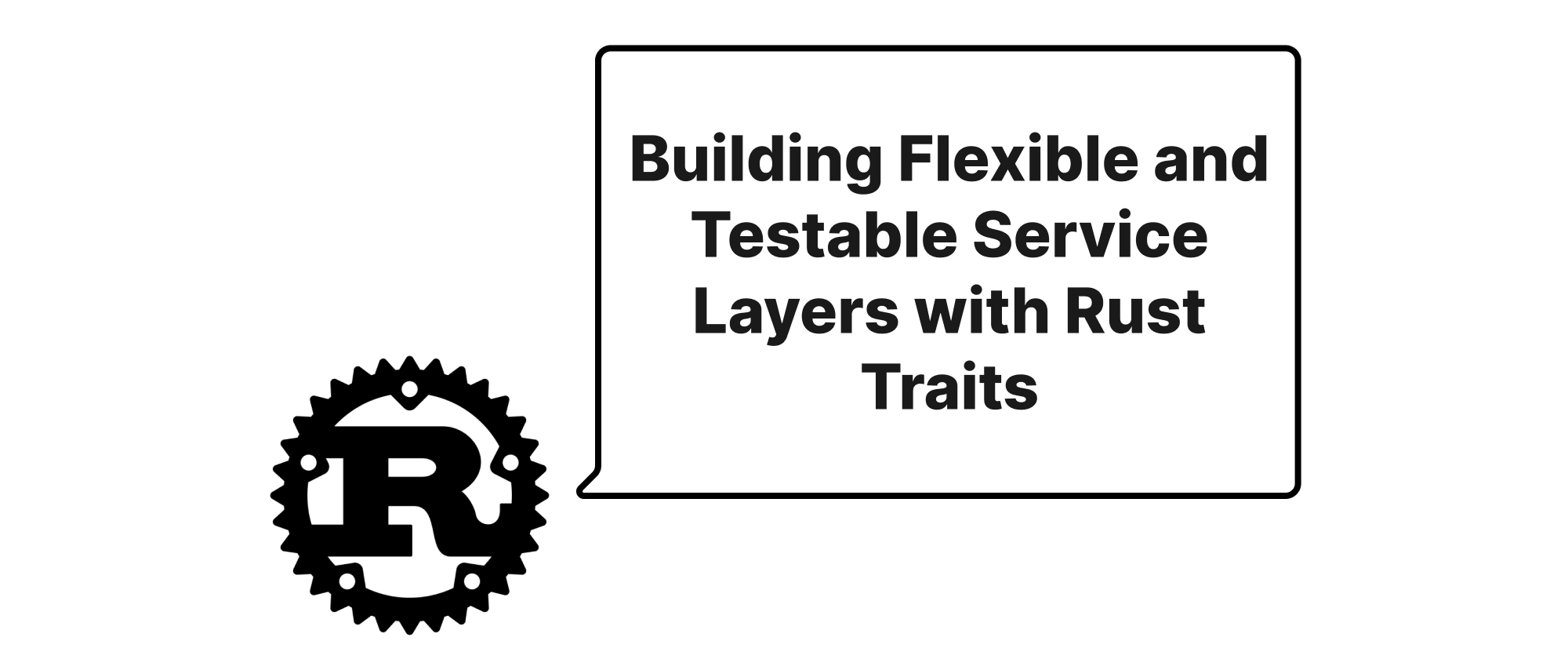Elegant Error Handling in Axum/Actix Web with IntoResponse
James Reed
Infrastructure Engineer · Leapcell

Introduction
In the world of web services, robust error handling is paramount. When an issue arises, whether it's a malformed request, a database problem, or an internal server fault, the server needs to communicate this clearly and effectively to the client. This typically involves returning an appropriate HTTP status code and a descriptive error message. In Rust, a language renowned for its type safety and error-handling capabilities, the Result enum is the fundamental building block for propagating errors. However, simply returning a Result from a handler function in web frameworks like Axum or Actix Web won't directly translate into a user-friendly HTTP response. This is where the IntoResponse trait becomes indispensable. It allows us to seamlessly map our application's Result types, particularly the Err variants, into well-structured HTTP error responses, enhancing both developer experience and API clarity. Let's delve into how this powerful mechanism works to elevate our web service's error handling.
Understanding the Core Concepts
Before diving into the specifics, let's clarify some key terms that are central to our discussion:
Result<T, E>: This is Rust's standard enum for operations that can either succeed or fail. It has two variants:Ok(T)representing success with a valueT, andErr(E)representing failure with an error valueE.IntoResponseTrait: This trait, provided by both Axum and Actix Web (though with slightly different names,IntoResponsein Axum andResponderin Actix Web, they serve a similar purpose), defines how a type can be converted into an HTTP response. Any type that implementsIntoResponsecan be directly returned from a web handler.- HTTP Status Codes: These are standard three-digit numbers indicating the outcome of an HTTP request. For errors, common codes include
400 Bad Request,401 Unauthorized,403 Forbidden,404 Not Found,500 Internal Server Error, etc. - JSON (JavaScript Object Notation): A lightweight data-interchange format often used for sending structured error messages from web services to clients.
The Principle of Elegant Error Conversion
The core idea is to implement the IntoResponse trait for our custom error types. When a handler function returns a Result<T, E>, and it evaluates to Err(e), the web framework will look for an IntoResponse implementation for that E type. If found, it will use that implementation to convert the error into an appropriate HTTP response. This allows us to centralize our error-to-HTTP-response mapping logic, keeping our handler functions clean and focused on business logic.
Let's illustrate this with examples for both Axum and Actix Web.
Axum Implementation
Axum leverages its IntoResponse trait to great effect for error handling. We define a custom error enum and then implement IntoResponse for it.
use axum::{ http::StatusCode, response::{IntoResponse, Response}, Json, }; use serde::Serialize; use thiserror::Error; // A popular crate for deriving error types // 1. Define your custom error enum #[derive(Error, Debug)] pub enum AppError { #[error("Invalid input data: {0}")] ValidationError(String), #[error("Resource not found: {0}")] NotFound(String), #[error("Database error: {0}")] DatabaseError(#[from] sqlx::Error), // Example for integrating with a DB error #[error("Internal server error")] InternalServerError, } // 2. Define a struct for our standardised HTTP error body #[derive(Serialize)] struct ErrorResponse { code: u16, message: String, details: Option<String>, } // 3. Implement IntoResponse for your custom error enum impl IntoResponse for AppError { fn into_response(self) -> Response { let (status, error_message) = match self { AppError::ValidationError(msg) => (StatusCode::BAD_REQUEST, msg), AppError::NotFound(msg) => (StatusCode::NOT_FOUND, msg), AppError::DatabaseError(err) => { eprintln!("Database error: {:?}", err); // Log the internal error (StatusCode::INTERNAL_SERVER_ERROR, "Database operation failed".to_string()) }, AppError::InternalServerError => (StatusCode::INTERNAL_SERVER_ERROR, "An unexpected error occurred".to_string()), }; let body = Json(ErrorResponse { code: status.as_u16(), message: error_message, details: None, // Could add more details here if needed }); (status, body).into_response() } } // Example Axum handler async fn create_user() -> Result<Json<String>, AppError> { // Simulate some validation logic let is_valid = false; if !is_valid { return Err(AppError::ValidationError("Username cannot be empty".to_string())); } // Simulate a database operation let db_success = false; if !db_success { // In a real app, this would be a actual sqlx::Error return Err(AppError::DatabaseError(sqlx::Error::RowNotFound)); } Ok(Json("User created successfully".to_string())) } // To run this: // async fn main() { // let app = axum::Router::new().route("/users", axum::routing::post(create_user)); // let listener = tokio::net::TcpListener::bind("127.0.0.1:3000").await.unwrap(); // axum::serve(listener, app).await.unwrap(); // }
In this Axum example:
- We define
AppErrorto encapsulate various application-specific errors. ErrorResponseprovides a consistent structure for error messages sent to the client.- The
impl IntoResponse for AppErrorblock contains the core logic. EachAppErrorvariant is mapped to an appropriateStatusCodeand an error message, which is then serialized into JSON and returned as the HTTP response body. - The
create_userhandler can now simply returnResult<_, AppError>, and if anErr(AppError::...)is returned, Axum will automatically callinto_responseon it.
Actix Web Implementation
Actix Web uses its Responder trait for similar functionality.
use actix_web::{ dev::HttpResponseBuilder, // For building custom responses http::StatusCode, web::Json, HttpResponse, ResponseError, // The trait to implement }; use serde::Serialize; use thiserror::Error; // 1. Define your custom error enum #[derive(Error, Debug)] pub enum ServiceError { #[error("Validation failed: {0}")] ValidationFailed(String), #[error("Authentication required")] Unauthorized, #[error("Database issue: {0}")] DbError(#[from] sqlx::Error), #[error("Something went wrong")] InternalError, } // 2. Define a struct for our standardised HTTP error body #[derive(Serialize)] struct ApiError { status: u16, message: String, } // 3. Implement ResponseError for your custom error enum impl ResponseError for ServiceError { fn status_code(&self) -> StatusCode { match *self { ServiceError::ValidationFailed(_) => StatusCode::BAD_REQUEST, ServiceError::Unauthorized => StatusCode::UNAUTHORIZED, ServiceError::DbError(_) => StatusCode::INTERNAL_SERVER_ERROR, ServiceError::InternalError => StatusCode::INTERNAL_SERVER_ERROR, } } fn error_response(&self) -> HttpResponse { let status = self.status_code(); let error_message = match self { ServiceError::ValidationFailed(msg) => msg.clone(), ServiceError::Unauthorized => "Authentication failed".to_string(), ServiceError::DbError(err) => { eprintln!("Actix DB error: {:?}", err); // Log internal error "Database error occurred".to_string() }, ServiceError::InternalError => "An unexpected error happened".to_string(), }; HttpResponseBuilder::new(status).json(ApiError { status: status.as_u16(), message: error_message, }) } } // Example Actix Web handler async fn get_item() -> Result<Json<String>, ServiceError> { let item_id_exists = false; // Simulate item not found if !item_id_exists { return Err(ServiceError::ValidationFailed( "Item ID is missing or invalid".to_string(), )); } // Simulate an authorization check let is_authorized = false; if !is_authorized { return Err(ServiceError::Unauthorized); } Ok(Json("Item details".to_string())) } // To run this: // #[actix_web::main] // async fn main() -> std::io::Result<()> { // use actix_web::{web, App, HttpServer}; // HttpServer::new(|| { // App::new().route("/items", web::get().to(get_item)) // }) // .bind("127.0.0.1:8080")? // .run() // .await // }
In the Actix Web example:
- We define
ServiceErrorthat implementsResponseError. TheResponseErrortrait requiresstatus_codeanderror_responsemethods. status_codeprovides the HTTP status, anderror_responseconstructs the fullHttpResponseobject, often containing a JSON body.- Handler functions like
get_itemcan returnResult<_, ServiceError>, andactix-webautomatically handles the conversion ofServiceErrorinto anHttpResponse.
Application Scenarios and Best Practices
- Centralized Error Handling: This pattern promotes a single source of truth for how different application errors are translated into HTTP responses. This makes APIs more consistent and easier to understand for clients.
- Readability: Handler functions remain clean, returning only
Results. The mapping logic is encapsulated within theIntoResponse/ResponseErrorimplementation. - Contextual Logging: As shown in the
DatabaseErrorandDbErrorcases, you can log the underlying internal error details (e.g., stack traces, specific database error messages) while returning a more generic and secure message to the client. This is crucial for debugging without exposing sensitive information. - Custom Error Payloads: You have full control over the JSON structure of your error responses, allowing for rich and descriptive error messages that clients can easily parse.
- Error Aggregation: Use
thiserrorto easily create complex error enums that can encompass errors from different modules or third-party crates (using#[from]), further centralizing your error handling.
Conclusion
By implementing the IntoResponse (Axum) or ResponseError (Actix Web) trait for custom error types, Rust web applications can achieve highly elegant and maintainable error handling. This pattern ensures that Result types returned from handler functions are gracefully transformed into meaningful HTTP error responses, providing a consistent API experience for clients while keeping application logic clean and focused. It is a fundamental practice for building robust and developer-friendly web services in Rust.


